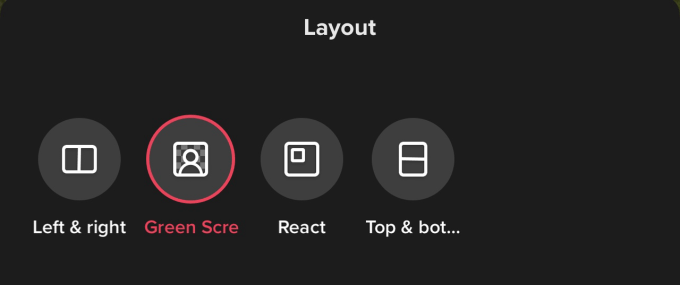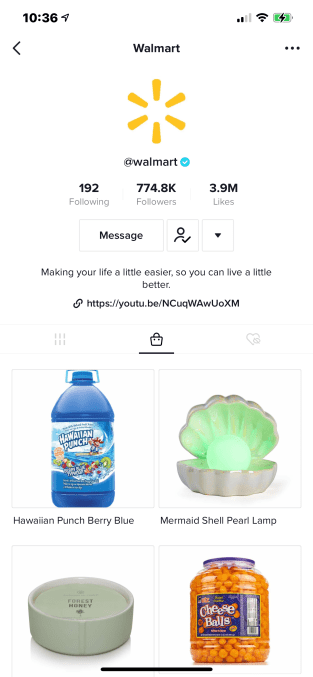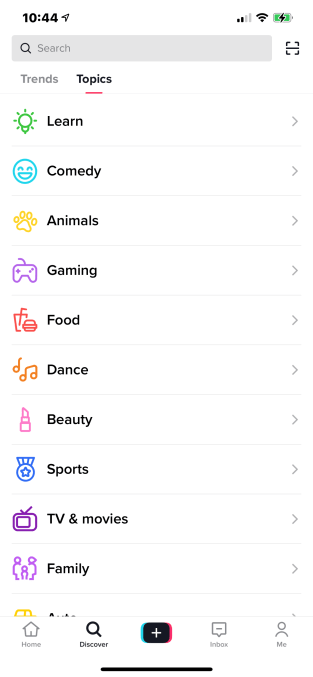As competition with tech giants heats up, TikTok is rolling out a series of new features to help keep its short-form video app ahead of rivals. The company today announced the launch of a new Green Screen Duet feature, which combines two of TikTok’s most popular editing tools to allow creators to use another video from TikTok as the background in their new video. It also confirmed the test of a new way to discover videos called “Topics.” These are dedicated interest-based feeds featuring the top, trending videos in a given category.
Green Screen Duet joins an existing set of Duet tools that let creators lay out two videos side-by-side. Today, Duet layouts include “Left & Right,” “React,” and “Top & Bottom.” Creators currently use Duets to sing, dance, joke or act alongside another user’s video, react to a video’s content, or even just watch a video from another, sometimes smaller, creator to raise awareness or call attention to its content.
Editing tools like Duet and Stitch are key to what makes TikTok not just a passive video viewing app but, rather, a new type of video-first social network. It’s also proven so popular, it has since been adopted by Facebook’s TikTok clone, Instagram Reels, where its known as Remix. Snapchat has been developing a Remix feature of its own, too.

Image Credits: TikTok
TikTok’s new Green Screen Duet will now appear as another option alongside the existing layouts, offering users a way to more easily use another video in the background as they record their own video overlaid on top.
This sort of video experience is something TikTok creators already do in a variety of ways. For example, they may capture images or screen recordings, then use other editing tools to create a green screen effect like this. Or they may react to a video using a Stitch instead, as that can be easier. A built-in Green Screen Duet feature simply offers another way to record new videos that include existing videos.
When the feature is used, the Duetted video plays in the background over the new video being recorded. TikTok believes the launch will inspire new formats for creativity and expression, as a result.
TikTok has been busy upgrading its interface to improve recording and discovering new video content in its app in recent weeks, as Facebook, YouTube, and Snapchat have tried to reproduce TikTok’s feature set in their own apps. For instance, TikTok just launched interactive music features last month in an effort to get ahead.
In another leap, TikTok is also now testing a new Discover page in the app, where instead of only featuring the current trends, as before, it now organizes videos into categories.
These categories represent the many areas of interest on TikTok, like gaming, beauty, dance, TV & movies, sports, family, learning, and much more. When you tap into any given category, you’re taken to a feed that includes the community’s top, trending content. The feeds will be affected by factors like relevance, timeliness, and interest, and can help users find new content and creators outside of what their personalized For You page shows.
TikTok confirmed the test has been rolling out in the U.S. over the past few weeks.
The company also currently testing e-commerce shopping features, where some brands like Hype and Walmart have been given a new “Shopping” tab on their TikTok profile where users can shop items, add to cart and then check out without leaving the app.

Image Credits: TikTok
The integration is less elegant than Instagram’s Shops, as there’s not a native, universal cart or integrated payment mechanism. Instead, users are visiting the retailer’s website directly.
The advances TikTok is making, however, has been paying off in terms of capturing a large Gen Z user base.
According to eMarketer, more Gen Z users in the U.S. now use TikTok than Instagram, or 37.3 million monthly active users compared with 33.3 million users, respectively. And by 2023, the firm predicts TikTok will surpass Snapchat in terms of total U.S. users, as well.
But TikTok’s global ambitions are impacted not only by its ban in India but also the possibility that creators will find more monetization opportunities on established platforms.
Yesterday, for example, YouTube announced a $100 million fund for top YouTube Shorts creators, and said it will soon testing ads on Shorts. That could help creators generate revenue from short-form content, while also converting casual viewers to channel subscribers where there are even more opportunities to monetize. Snapchat and Instagram have also been wooing creators with cash, and ultimately, if creators find they can make more money elsewhere they could shift some of their attention away from TikTok, no matter how many creative new features it adds.




